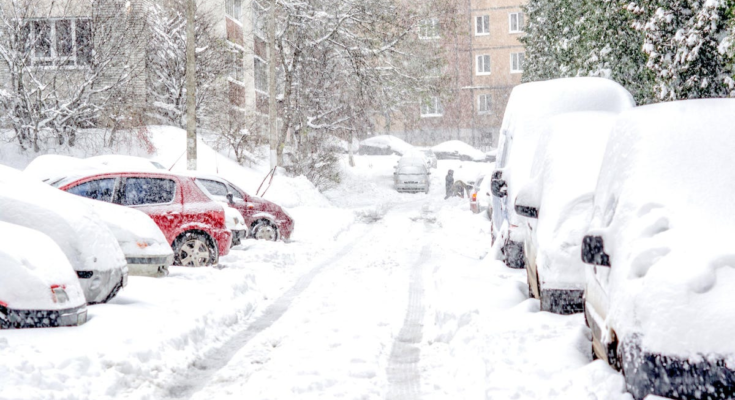
If you have to suffer through a natural disaster, a blizzard is a good one. The death rate is relatively low—the worst blizzard in American history, the “Great White Hurricane” of 1888, only claimed a total of 400 lives—and preparation is easy. As long as don’t do anything dumb and you’re not incredibly unlucky, you should be alright.
Determine how much danger you are in
Like most natural disasters, preparation is key, and that begins with determining how much danger you’re in. Blizzards are most common in the upper Midwest and Great Plains in the U.S., but they could theoretically happen anywhere in the country except the Gulf Coast, coastal California, and Hawaii—but with our new, exciting climate, who even knows if that rule will hold?
If you live in a blizzard-likely area, take a few minutes during the lazy days of summer to plan for a potential snow-disaster. Do the following:
Make a blizzard emergency kit
For a blizzard, you want to prepare for a few cold days without power. You should have a basic survival bag for all manner of natural disasters tucked away in an easy-to-access spot in your house for any disaster. According to the government, a boilerplate any-old-emergency kit will contain:
- Water and non-perishable food for several days
- Extra cell phone battery or charger
- Battery-powered or hand crank radio that can receive NOAA Weather Radio tone alerts and extra batteries
- Flashlight and extra batteries
- First aid kit
- Whistle to signal for help
- Dust mask, to help filter contaminated air, and plastic sheeting and duct tape to shelter-in-place
- Moist towelettes, garbage bags, and plastic ties for personal sanitation
- Non-sparking wrench or pliers to turn off utilities
- Can opener (if your kit contains canned food)
- Local maps
- Extra clothing and blankets (although I bet you already know where these are in your home)
Here’s a handy shopping list you can take to the supermarket, complete with “extra credit” items like prescriptions medicine and games to keep you busy.
Keep up with impending weather reports
Be able to access multiple sources of information, from the internet, to television, to radio, and make sure you can get updates even if the power goes out.
Know the difference between “advisories,” “watches,” and “warnings”
As cold weather approaches, you may hear difference kinds of buzzwords for approaching storms on your NOAA weather radio and from other sources. Here’s a crash course on the relevant winter weather warnings from the National Weather Service, and what they mean, with the most severe listed first.
Warnings
A warning indicates an 80% or greater probability of conditions that pose a threat to life or property, and that travel will become difficult to impossible. In other words: “This storm is serious business.”
- Blizzard Warning: A blizzard warning means that the following conditions are occurring or expected within the next 12 to 18 hours: Snow and/or blowing snow reducing visibility to 1/4 mile or less for three hours or longer, and sustained winds of 35 mph or greater or frequent gusts to 35 mph or greater.
- Winter Storm Warning: A winter storm warning is issued when a significant combination of hazardous winter weather is occurring or imminent. That means five inches or more of snow/sleet within a 12-hour period or seven inches or more of snow/sleet within a 24-hour period, and/or enough ice accumulation to cause damage to trees or power lines. It also can mean a life-threatening or damaging combination of snow and/or ice accumulation with wind.
Watches
Watches are intended to provide enough lead time so you can make plans to stay safe. They are usually issued a day or so before the predicted event when there’s a greater than 50% chance of it happening.
- Winter Storm Watch: A winter storm watch is issued when there is the potential for significant and hazardous winter weather within 48 hours. This doesn’t mean that significant and hazardous winter weather will occur—it only means it is possible.
- Blizzard Watch: This means conditions are favorable for a blizzard event—low visibility with winds of at least 35 mph.
Advisories
Winter storm advisories indicate that less serious (but still concerning) weather conditions are possible. Remember, though, a storm can change from one condition to another, so keep checking back. Go to the National Weather Service’s site for more in-depth weather-warning information.
Stay home if a blizzard is coming
If you only follow one rule for blizzard survival, make it this one: Do not be outside during a blizzard. If you’re home, you probably won’t be snowbound for more than a week (and even that is unlikely), and you’ll be nice and cozy with your stored food and footy pajamas. Outside is where the Death is.
What to do if you are at home during a blizzard
If you are home during a blizzard or winter storm (and you should be) take the following steps:
- Stay inside (I really can’t stress this enough).
- Don’t forget your pets. Bring them inside, too.
- If you have electric heat, crank it up as the storm approaches in case you lose power.
- Stay in a small, insulated area: To conserve heat, stay in one room as much as possible.
- Stuff towels and rags under doors to conserve heat.
- Be careful with alternative heaters like kerosene. They can start a fire, and if not properly ventilated, you can die from carbon monoxide poisoning.
- Make sure Jack Torrance doesn’t sabotage the radio and snowcat to keep you and Danny trapped in the Overlook.
- Layer your clothing: Wear layers of light clothing.
- Cover windows at night but open them during day for to catch any heat from sunlight
- Save batteries: Use your phone to call authorities only.
What to do if you are caught in your car during a blizzard or snowstorm?
Being trapped in your car during a snow-mergency is bad, but not necessarily deadly bad. Here’s a detailed trapped-in-your-car survival guide.
What to do if you are caught outside during a blizzard
So you didn’t listen when I said to stay home, huh? Now you’re stumbling blindly through a snowstorm and freezing to death. I won’t sugar coat it: Things are bad for you, and your survival depends on the severity of the storm. But here’s what to do:
- Find shelter: Get out of the wind and snow. Don’t try to make it home or wherever else you’re going if there’s somewhere safe you can wait things out.
- Cover up your exposed flesh: I imagine this would occur to you anyway, but just in case it doesn’t, cover up as much as possible to stay warm and avoid frostbite.
- Build a shelter: The National Weather Service recommends the following if you can’t find a shelter: “Build a lean-to, windbreak, or snow cave for protection from the wind. Build a fire for heat and to attract attention. Place rocks around the fire to absorb and reflect heat.” I think they’re being very optimistic. During a serious blizzard, like Minnesota’s “Children’s Blizzard” of 1888, people died yards from their houses because they got disoriented and snow-blind, so you’re probably not going to have time to build an igloo or whatever in a real blizzard. But learn wilderness survival tactics if you are likely to be at risk.
- Melt snow for water: Melting snow for water is OK, but don’t eat it—that will lower your body temperature.



